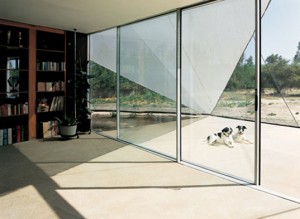In ordinary architecture, our world is arranged to the word “function”, divided into black and white. Life is sustained by the acts that lie between them, as Sou Fujimoto explains in his text Primitive Future. The opposite realities of the prime states of architecture are the nest and the cave. The nest is a “functional place” built as a hospitable arrangement to satisfy the prior needs of the people or animals and the cave is the result of a natural accident whether it is hospitable or inhospitable to the people, although the nest and the cave look similar, they are opposite concepts.
For instance, between inside and outside, between nature and artifice, space cannot instantaneously switch from one to another but the space lies in the gradation that exists between them creating a whole new diversity of concepts giving architecture a new world of possibilities. Different gradations create different types of experience in the transition from A to B, nest to cave, nature to architecture.
Like a “hazy area”, the ideal architecture is a place where inside and outside merge. As a sense thought of as the ultimate architecture, it can be called only in-between where all places are connected and are simultaneously detached creating an infinite range of conditions that lie between detachment and connection.
For example, the Wall House by Frohn and Rojas, is a house where the wall, as a complex membrane, structure our social interactions breaking down the traditional walls of a house into different layers where you can see the two opposite concepts of artifice and nature, you can see the gradation from private to public, starting with the concrete cave, stacked shelving, milky shell to the soft skin, creating different atmospheric environments connecting nature but also isolate from nature. It’s a hybrid on internal-private and external-public environment creating a blurred connection of layers as you go inside “the cave”, it is more detached from nature.
As a detached-fit, architecture is simultaneously a connected-fit. The relational logics are systems of interaction, connection and alterations in the experience that happens in the experience of “in-between” architecture creating an infinite range of conditions that lie in between them. Therefore the concept of architecture is a new existence possessing the diversity of nature and the lucidity of artifice.
Sustainable architecture, more than a tendency, is a great need nowadays and in the future. For me, this is a very important topic that I want to study. Understanding the negative environmental impact of the buildings will help me to research new systems and efficient ways of the use of materials, energy and the right development of space.

